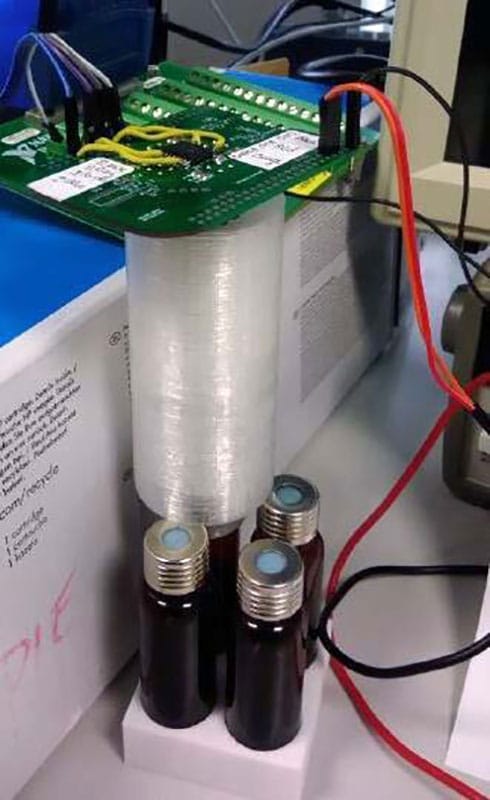Wine quality is an essential requirement for both producers and consumers. The quality assurance system of wine production includes the control of a number of factors in the cultivation phase and during wine production, as well as a final inspection for acceptance of the wine. The final inspection, which is still performed manually, includes a sensory evaluation and control of the technical analysis parameters’ limits.
Now, engineering researchers at the University of Gävle have developed an electronic nose (E-nose) that identifies the quality of red wine. The non-invasive technology that mimics the human nose may become an alternative to manual wine tasting.
The E-nose system consists of some sensors, a signal processing system, and an analysis system. The e-nose can identify substances using a method similar to the human sense of smell.
Electronic nose technology is not new; it has been applied in many other areas, from detecting explosives to determining whether a person is suffering from a serious illness.
The new version of the electronic nose focuses on wine or, more precisely, the level of acetic acid in red wine. Acetic acid is one of the most critical substances in wine because it is an indicator of the wine’s acidity. It is formed when alcohol oxidizes and is present in low levels in all wine. However, the concentration of acetic acid can become too high during winemaking or when some wines are aged for too long, which risks making the wine undrinkable.

The new electronic nose measures how the acetic acid content of wine changes over time. The new device has improved software and a new component that blows air into the sensors.
“When adding oxygen, our results became better and more reliable since oxygen releases substances from the wine. You can compare it to when a sommelier aerates wine before tasting,” says José Chilo, a researcher in electrical engineering at the University of Gävle.
The method offers speed and is highly reliable. Additionally, in traditional wine tasting, where wine connoisseurs sample the wine, people can fall ill and have a reduced sense of smell.
“Possibly, chemical analysis can provide an even more accurate result, but the drawbacks here are that it is slower and costs more money. The e-nose provides faster answers regarding the quality of the wine,” José Chilo says.
The new e-nose is a prototype that is primarily intended for use in winemaking. However, it can potentially assess the quality of aged wine.
“If we develop this method further, it will be able to identify essential components in a wine. By using AI, we are improving the technology every day,” José Chilo says.
Journal reference:
- Esmeralda Hernández, José Pelegrí-Sebastiá, Tomás Sogorb, and José Chilo. Evaluation of Red Wine Acidification Using an E-Nose System with Venturi Tool Sampling. Sensors, 2023; DOI: 10.3390/s23062878
A new electronic nose identifies the quality of a red wine
Source: Tambay News

0 Comments